
Knowing how to read a surf forecast is a critical part of finding good, quality waves.
Before the Internet, surfers would use weather reports and tide charts to forecast the surf. In most cases however, finding waves was done simply by strapping a surfboard onto your car and driving to the ocean. If there were waves, you surfed. If it was flat, you went for a paddle or went home. Today, surfers can find useful information about the surf conditions, such as
swell height and period, swell direction, wind direction, and the tides,
all by checking a surf forecast online.
One of the main questions that a surf forecast answers is, “How big are the waves going to be tomorrow?” This is given to us in the form of the swell height and swell period . (The terms “swell” and “wave” are often interchangeable terms, but for the purpose of simplification, “swell” is the collection of waves in the open ocean and a “wave” is a singular wave in that swell.)
The swell height is the measurement, recorded by an offshore buoy, from the trough of the wave to the crest of the wave. The number you see on a surf report is the average height of unbroken waves in a set, passing over a buoy.
Swell period is the time it takes, in seconds, for successive waves to pass the same fixed point. The swell period is critical surf knowledge because it ultimately measures the quality of your upcoming surf session.
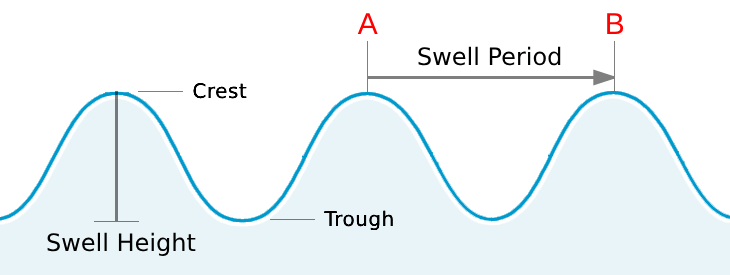
Short period swells generally mean that the wave was created by a nearby storm which has not traveled far enough to gain speed and power. For example, a report might read 2 feet (height) at 5 seconds (period). This will result in small, weak waves that are difficult to surf.
The longer the swell period, the faster and more powerful the waves will be. Let’s contrast the above wave with one reported at 2 feet at 15 seconds . Even though the wave is only 2 feet, it has a 15 second period, meaning the wave is traveling from a longer distance (known as a ground swell ) and will result in faster, bigger, and more powerful waves that are much better to surf.
Swell Period (s)
Surf Conditions
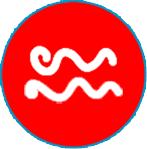
Local wind swells with bumpy and disordered waves
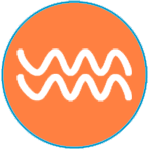
Regional and local wind swells
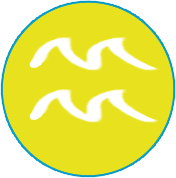
Medium-distance swells improve the local surf conditions
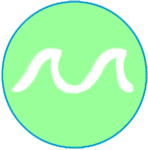
The power of ground swell is taking effect
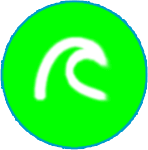
A long period swell brings high-quality waves
To get a better idea of how the waves will be hitting your surf spot, it is important to know which direction the swell is coming from . Wushi Harbor (North) , located in Yilan, is a southeast-facing beach break.
It receives waves from just about any direction, making it a good surfing spot all year round. Waves coming from the East direction, know as an East swell, will hit Wushi almost directly resulting in good waves. The surf is even better when the swell direction in southeast, since the break is facing Southeast and the swell will hit it directly. Unless there is sufficient wave height and swell period, which will cause the swell to wrap in toward the shoreline, direct North and South swells tend to get blocked by land mass to the north and south. Therefore, it is also important to know the topography around your surf spot so that you know which swell direction will produce the best surf.
The best surf conditions would have absolutely no wind. In these conditions, you would have glassy waves , a surfer’s dream scenario. And a rare one. Regardless, conditions can still be great with some wind.
There are two main types of wind conditions in surfing: Onshore Wind and Offshore Wind.
Onshore winds blow from the ocean towards the shore. These types of winds are bad for surfing because they create chop on the face of the wave, making it harder to surf on. Onshore winds also break up and push down the swell, causing the wave height to be smaller. However, some surfers who like to perform aerial maneuvers welcome a bit of onshore wind, as it helps keep their surfboards "attached" to their feet while in the air.
Offshore winds blow from the land towards the sea and into the coming waves , creating very smooth waves by lightly holding them up before they break. Offshore winds help groom the wave and can also help create the barrel shape that every surfer dreams of. Offshore winds can be a problem however. If the wind is blowing too hard, surfers taking off on a wave can get blown back or sprayed with a large mist of water from the cresting wave, making it difficult to see as you drop in.
Knowing the wind direction and wind speed for your surf spot will help you decide when the best time to go out for surf is. Generally, most surf spots in Taiwan will have calm and glassy seas in the early morning, with the wind picking up in the afternoon hours and then calming down again in the evening.
It is critical to understand the role tides have on the way waves breaks at a particular surf spot. Tides affect water depth, either exposing or hiding the ocean floor that is necessary for a wave to break. Some surf spots do better on a high-tide, while others do better on a low- to mid-tide. Knowing which tide is best for your surf spot takes a bit of time to figure out. If you are unsure, just ask a local surfer or surf shop about the best surfing conditions for a spot.
Most beach breaks will work best at a mid- to high-tide because sand bars may be too shallow or exposed on a lower tide, causing the wave to close out or break all at once. Reef breaks usually work best on a low- to mid-tide , with the higher tides causing the waves to slow down or go flat. This is because a wave needs to have a shallow bottom to cause friction and make the wave stand up and break on itself. Be careful however, some reef breaks are very shallow and dangerous to surf at very low-tides, due to exposed sharp coral or rocks. Wushi Harbor, our beach break example above, usually works best at mid-tide as the tide is coming in.



Tides are controlled by the moon and therefore very predictable.
There are usually two high-tides and two low-tides every day at most coastal areas.
Due to the way the moon and earth rotate together, the times of the high- and low-tides will usually be 50 minutes later than the day before. Surf forecasts will give you the times and levels of both high- and low-tide each day. The tide range, which is the difference between high- and low-tides for a particular area will also change with the phase of the moon. On a full moon, tides will be extremely high and then go extremely low, while new moons will create moderate to little change in the tide range.
Check out the video below to learn how tides work.
We hope this article helps you better understand how to read a surf report, and we hope it helps you find better surf!
View All Taiwan Surf Forecasts
Related Articles: